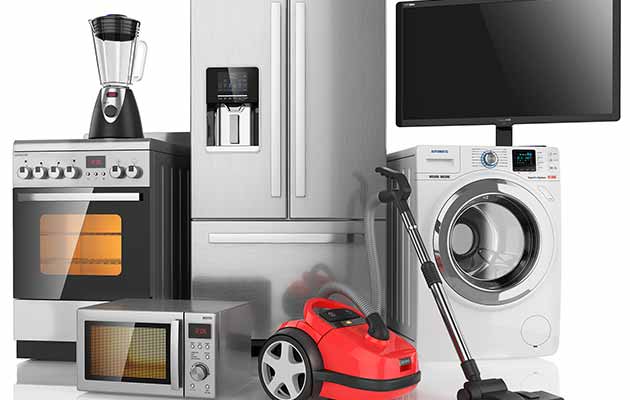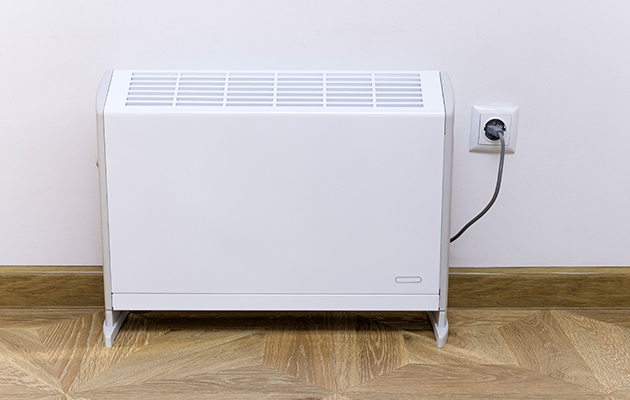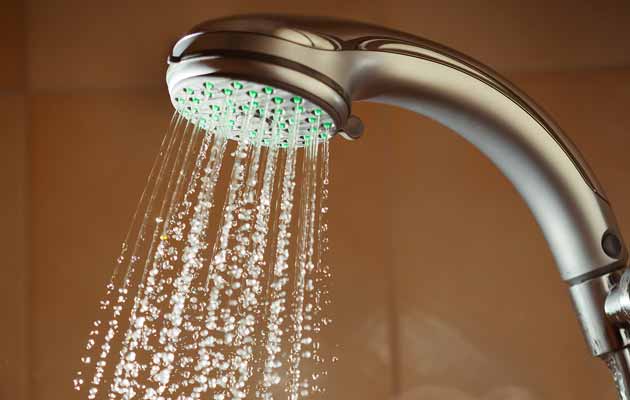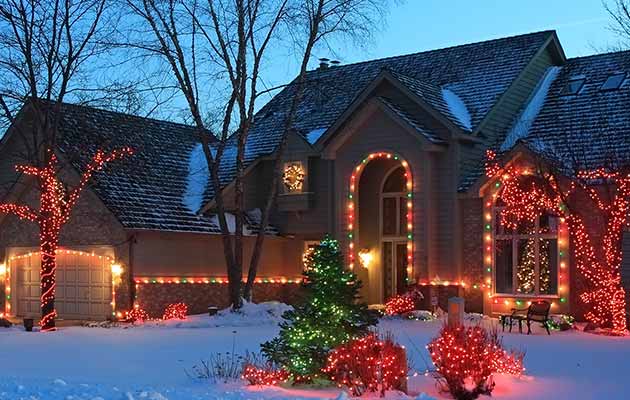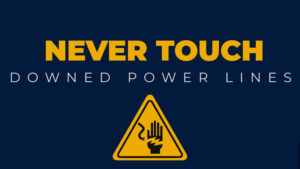Quick Links
Knowledge is Power!
Is your group interested in learning more about power in the Upper Peninsula? From classroom education to community meetings to businesses large and small, UPPCO is happy to be your guest!
Electrical Safety Program for Schools
Teaching kids about energy use and electrical safety helps them stay healthy and prepares them to do their part to save energy and protect the environment. Our program covers the basics of electricity, how it works, and how it's generated; home safety, powerline safety, and MISS DIG. This presentation has sparks, smoke, and flames!
We have power specialists who are great for your class and school! If you are interested in having our team visit your school, and your school is in the UPPCO service area, click the button below.
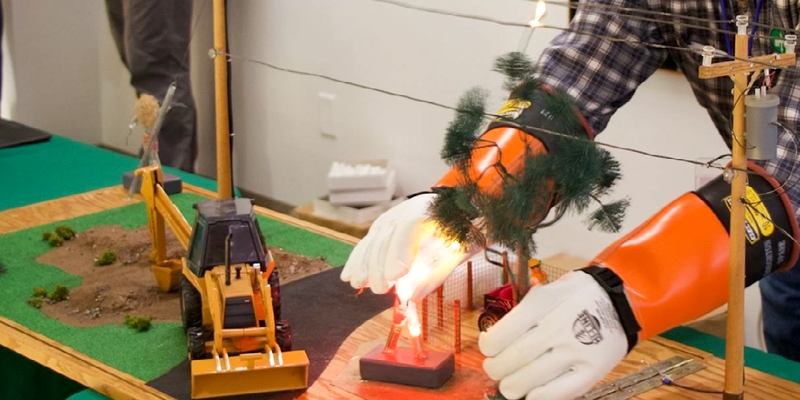
Community Groups & First Responders
We’re eager to share information about power safety, how power is generated and delivered to the U.P., and how anyone can help reduce their power use and cut costs. To invite a member of our team to visit your U.P. community group or organization, or for presentations at town forums, click the button below.
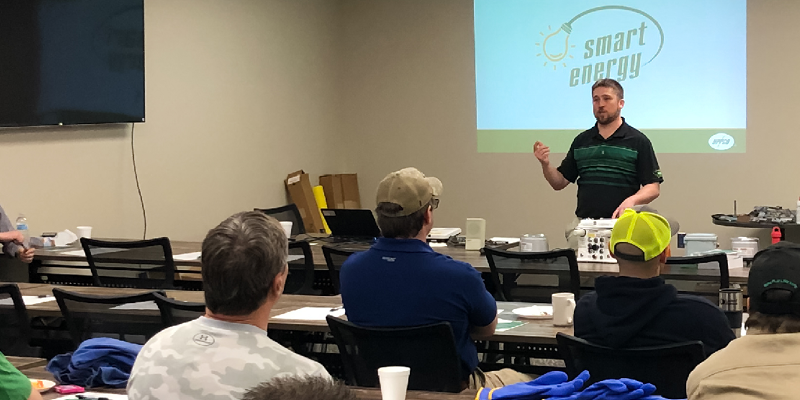
Business
Your business can benefit from energy reduction strategies and programs that can cut costs.
UPPCO is happy to meet with your business team. Click the button below to schedule a time for a specialist from our team to visit your business.


Energy Tips and Information
Reduce your energy use by making some changes around your home and adjusting some of your normal habits.
Top 5 Electric Appliance Tips
Appliance Efficiency Adds Up to Savings
The cost to run your household appliances is a large enough part of your energy budget that taking steps to use less can really pay off.
-
1
Purchase ENERGY STAR® certified appliances.
Older appliances — even those made in the 1990s and early 2000s — can use significantly more energy than today’s ENERGY STAR® models. When it’s time to purchase a new appliance, look for the ENERGY STAR label and use their most efficient settings. Also, be sure to keep them well maintained.

-
2
Do laundry the energy-efficient way.
Hot water heating accounts for about 90% of your washer’s energy use, so wash laundry in cold water whenever possible. Wash full loads or, if you must wash a partial load, adjust the water level. Clean your dryer’s lint trap before every load, and avoid over-drying clothes. Better yet, line-dry your laundry.
Depending on local water quality, many homeowners can effectively wash all their clothes in cold water. Fabrics generally last longer if dried on a clothesline or rack, too.
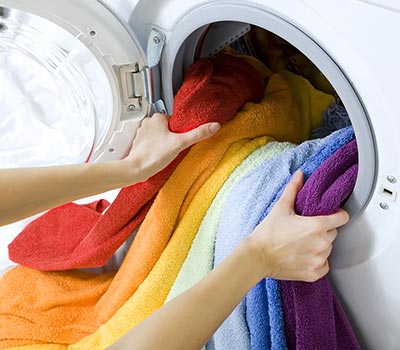
-
3
Use smart settings on your dishwasher.
Avoid common energy wasters when it comes to dishwashing. Rather than pre-rinsing dishes, which can use up to 20 gallons of water alone, simply scrape food off dishes and into your garbage disposal. Run only when full, avoid water-heating boost when possible and choose the no-heat drying option.
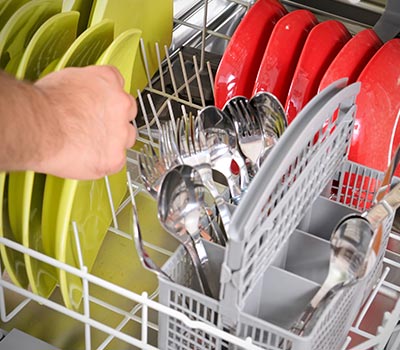
-
4
Keep your refrigeration costs down.
Start by unplugging that older extra refrigerator in the garage or basement. Older-model refrigerators cost you an average of $150 per year to run. Make sure your kitchen refrigerator is in a cool place, away from direct sunlight and heat-generating appliances that can make it work harder. Keep it no colder than about 35 to 38°F, with plenty of air circulation behind it. Don’t stand with the door open; grab what you need quickly and shut the door. Make sure the door seals fit tightly against the doorframe.
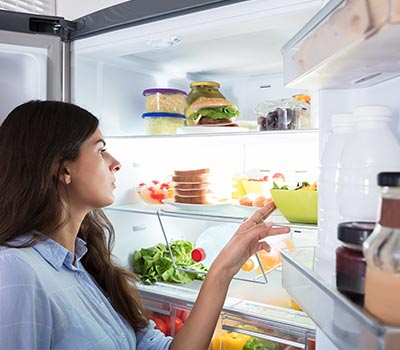
-
5
Be an energy-efficient cook.
While a microwave uses less energy than a range or oven, balance its use with other small appliances, like slow cookers and toaster ovens. When using your oven, preheat only when required, make sure seals are tight and don’t open the door while cooking.
Just by using the right size pot on a burner, you can save about $36 a year if you have an electric range. And using a microwave to cook small portions can reduce the energy you use for cooking by as much as 75%!

Top 5 Heating Tips
Enjoy cool savings with an energy-efficient home
With a little know-how, you can cut costs significantly without sacrificing your cozy winter comfort. A few small DIY weatherization efforts and habit changes can go a long way.
-
1
Install a programmable thermostat.
Programmable thermostats can save you money by raising the air conditioning temperature while you sleep and while you're away. Whether you want a different setting for weekdays and weekends, or want to schedule settings for each day of the week, there’s a model to fit every lifestyle.
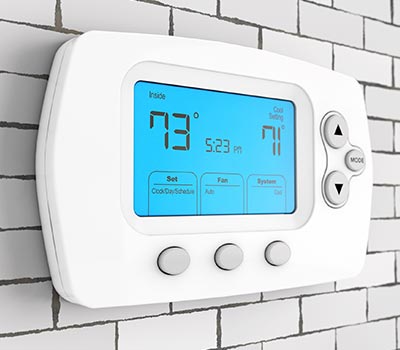
-
2
Properly seal leaks by weatherstripping.
Air sealing, specifically weatherstripping, eliminates drafts to save energy while improving air quality and comfort. Weatherstripping reduces air leakage by creating a tight seal between movable components such as doors and windows. Most types of weatherstripping are easy to install. Before application, you’ll need to detect air leaks and assess your ventilation needs. Detect air leaks through a blower door test from a qualified technician or find leaks yourself from visual inspections inside and outside the home.

-
3
Ensure your home has proper insullation.
The average homeowner can pay over $1,000 a year in cooling and heating costs, which is nearly half of a home’s total energy bill. No matter the age of your home, it's a good idea to inspect what insulation you have and evaluate whether you need to make some additions or adjustments to save on heating costs. You can learn about adding insullation to an existing home here.
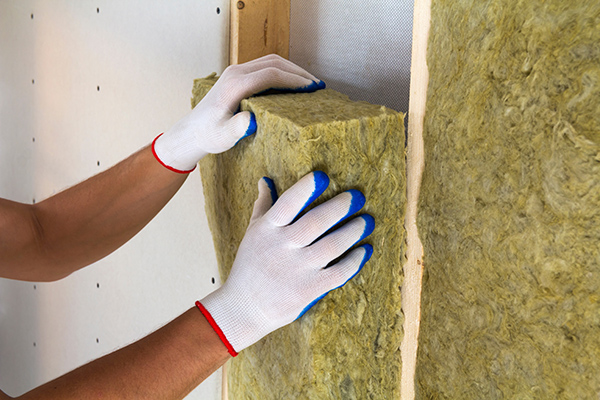
-
4
Install a ceiling fan.
Save on heating costs by using an ENERGY STAR® certified ceiling fan to better circulate air. A ceiling fan can push the hot air that has risen back down towards you, on the floor. Decorate your rooms while keeping them and warmer in winter. (BONUS - fans also keep your home cooler in summer!) Many ENERGY STAR® models can be installed by homeowners, but if wiring seems complex, consult a professional electrician.

-
5
Maximize indoor heat generation.
Keep your home warmer from the inside out by closing insulating curtains while you're not home during the day. Saving on heating costs only takes a little planning. If you don't have curious pets or little ones around, leave the oven open after cooking a meal to let the excess heat escape into your home.
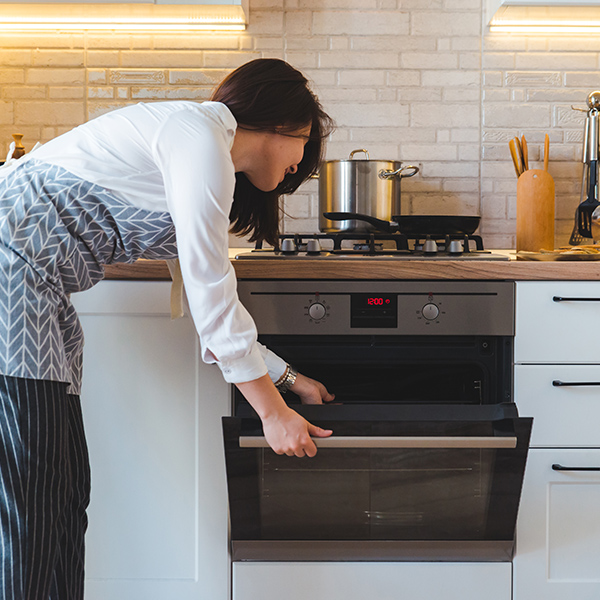
Top 5 Electronics Tips
Shut down energy waste
Consumer electronic products are responsible for approximately 15% of today’s household electricity use. You can reduce that energy use and your bill with a little know-how.
-
1
Use a home energy management system.
According to the Consumer Electronics Association, the average American household uses 24 electronics items; this can make it difficult to manage energy use. A home energy management system integrates a smart thermostat, power sockets and power strips into a single energy control system. Plug in your electronics to see how much energy they use, then manage your electronics, lights and air conditioning from a touch-screen display in your home, or remotely through a mobile app or online.

-
2
Use power strips to avoid phantom loads.
Many electronics draw a small amount of power even when they’re switched off; these are known as phantom loads. Stop energy waste by plugging related items into smart power strips, and then shut them off with one switch. Power strips are easy to use. Use them in a kitchen for small appliances, in your home office for computer equipment, and in your living room or for your TV, DVD player and game console.
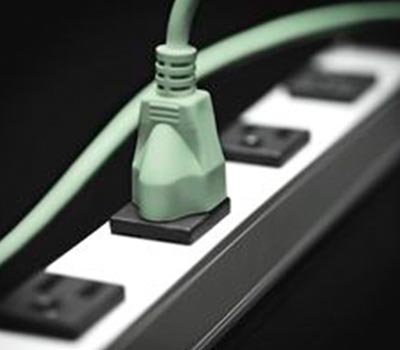
-
3
Purchase ENERGY STAR certified electronics.
Looking for another way to make your home an energy-efficient one? Consider replacing standard electronics with ENERGY STAR® certified models. Start with the most-used electronics in your home, such as your computer or television, to recover your investment more quickly. No more skill required than to find the ENERGY STAR® label on the box, and rest assured you’re saving energy and money.

-
4
Adjust power-management settings on computers and monitors.
The best way to save power used by computer monitors is setting them to go into sleep mode or manually turning them off when not in use, which saves more energy than using screen savers. Turn off a monitor if you’re going to be away for 20 minutes or more, and shut down the computer, too, if you’ll be away for two hours or more.

-
5
Use rechargeable batteries.
When purchasing consumer electronics, choose those that use rechargeable batteries, which are more cost-effective than disposable ones. When disposing of any type of battery or electronic, always read the manufacturer’s instructions or check with your city’s trash removal department for safe disposal options. More consumer electronics now use rechargeable batteries, which can reduce landfill waste in addition to being more energy-and cost-efficient.
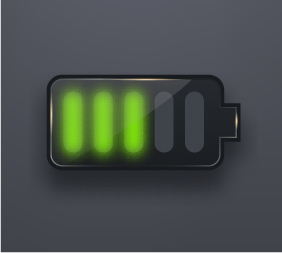
Top 5 Lighting Tips
Bright ideas in saving energy
Lighting is one of the easiest places to start saving energy in your home. Learn how to reduce your energy bill, while keeping your home comfortable and warmly lit.
-
1
Use ENERGY STAR® fixtures and bulbs.
Replace five or more of your most frequently used incandescent bulbs with ENERGY STAR® certified light emitting diode (LED) lighting, and watch the energy savings add up. Besides turning off lights, replacing bulbs is one of easiest ways to save energy. Start by replacing one light at a time or tackle one room at a time.
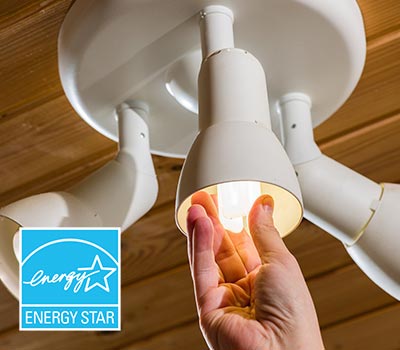
-
2
Install lighting controls.
Although we know turning off lights is an easy way to save energy, lighting controls can help. Indoor lighting controls that help prevent energy waste include dimmers, occupancy sensors and timers. Once installed, lighting controls are an easy way to save energy. When buying dimmers for LEDs, check packaging to make sure the controls and bulbs are compatible.
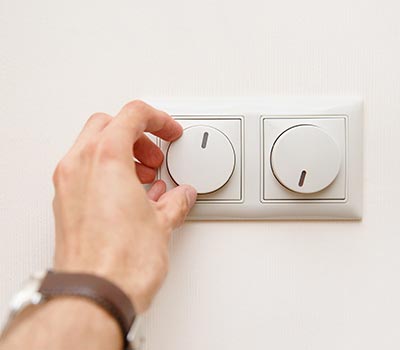
-
3
Use advanced-technology lighting outdoors.
Besides replacing standard incandescent bulbs with LEDs, you can save even more energy by installing ENERGY STAR® certified outdoor fixtures that use motion sensors or a photocell that turns on lights only at night. Outdoor lighting using these advanced technologies can be found at most home improvement and lighting stores. And many LEDs will fit into existing outdoor fixtures.

-
4
Use natural lighting to your advantage.
Using daylight to light your home can you save you energy and money. But, there are many more benefits to using natural light: It is free, sustainable, can enhance your energy level, improve your mood, and in the winter, can help warm your home. Start with the easiest ways to harness natural light, like moving furniture away from windows, choosing lightweight window coverings and repainting dark rooms in lighter colors that reflect light.
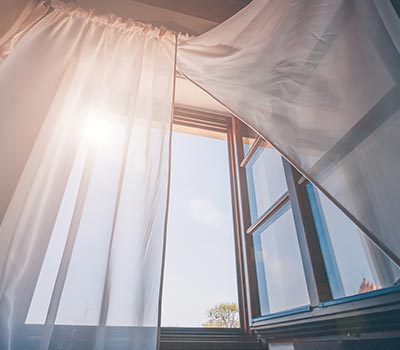
-
5
Manage bathroom humidity for longer bulb life.
If yours is like the average home, bathroom lighting is one of the most used fixtures. In addition to replacing incandescent bulbs with LEDs, controlling the humidity in your bathroom will help increase bulb life. It’s easy to run your bathroom’s ventilation fan during showers and baths, and for 15 minutes afterward, to save your LED bulbs. If you don’t have a bathroom fan, installation can take an advanced level of skill.
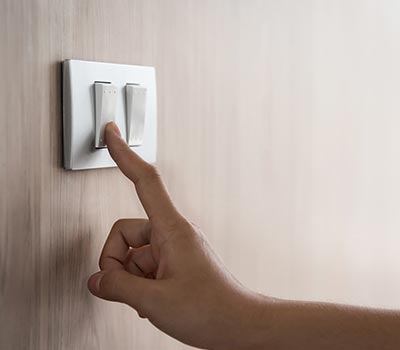
Top 5 Water Heating Tips
Warm up to efficiency and performance
The average household spends almost 20% of their home’s yearly energy usage on water heating costs alone. Take steps now to improve your water-heating equipment’s efficiency.
-
1
Lower the water heater thermostat.
For most homeowners, storage-type water heaters set above 120°F are simply using more energy without providing any additional benefits. One set to even 140°F can waste $36 to $61 annually in standby heat loss, and more than $400 in demand loss. Be sure to turn off electric, or turn down gas, water heaters when you go on vacation to avoid energy waste.
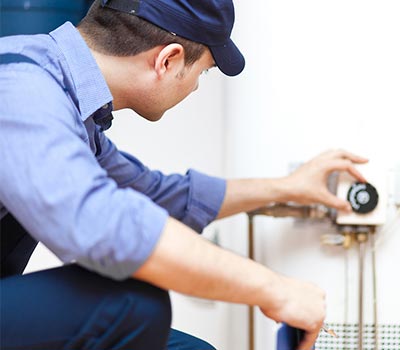
-
2
Use less hot water.
Use less hot water and you’ll not only save on energy costs, you will reduce your water bill and help preserve natural resources, too. Run your automatic dishwasher only when full and wash and rinse full loads of laundry in cold water. Install low-flow showerheads, and don’t forget to check for and repair plumbing leaks. All it takes is a few changes in your normal habits and a small investment or two to start using a lot less energy.
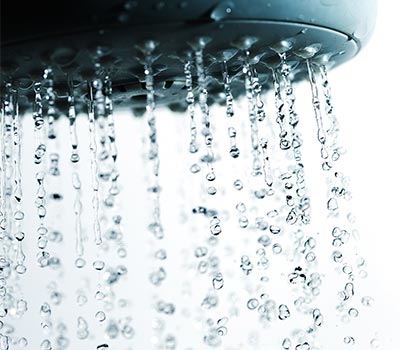
-
3
Insulate water heaters and piping.
Older electric storage-type water heaters can lose a lot of heat through their walls. Wrapping it in an insulating jacket can save energy wasted through excess heat loss, and make your water heater more efficient (insulating natural gas or oil-burner water heaters should be left to professional installers.) Insulating the hot water pipes in your home can save energy wasted through heat loss, and keep your hot water from cooling off before it reaches the tap. Insulating blankets or jackets are available at home improvement stores. Follow the manufacturer’s instructions or enlist the help of a professional.
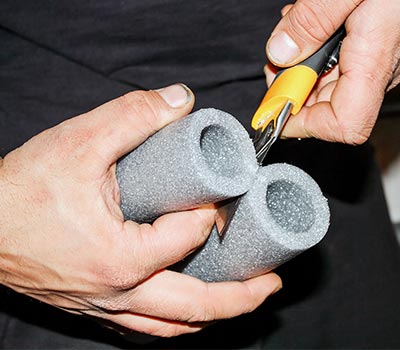
-
4
Replace older water heaters with ENERGY STAR® heat pump models.
ENERGY STAR® certified water heaters save energy and money with smart design enhancements that improve efficiency and performance. If your water heater is 10 or more years old, replace it with an ENERGY STAR® certified model to start saving money right away. There’s an ENERGY STAR® certified water heater to fit every household’s needs, from electric heat pump models to electric on demand, to solar water heating systems that save even more energy and money.

-
5
Drain the sediment from your tank.
Sediment can build up in a water heater over time. When it does, it needs to be drained out. Manufacturers recommend that you perform this maintenance once every three to six months. Sediment buildup makes your hot water heater work harder, which translates into a more expensive utility bill and a shorter lifespan for your water heater.
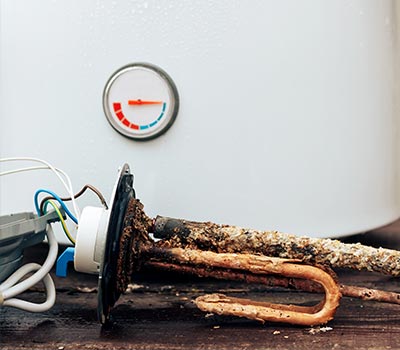
Top 5 Holiday Energy-Saving Tips
Can you be festive and frugal? Absolutely!
Learn how to save money this holiday season, while still being festive.
-
1
Use LED bulbs.
Replace your old holiday lights with Light-Emitting Diode (LED) light strings. Although they cost more initially, LEDs use a fraction of the energy of traditional holiday lights. Plus, they last up to 20 years.
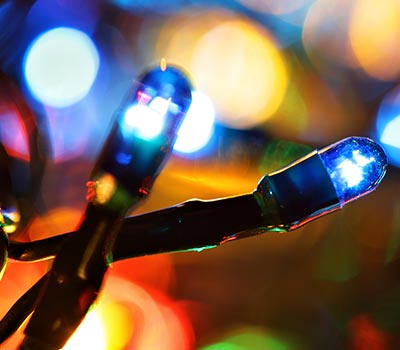
-
2
Use a timer to turn your holiday lights off and conserve energy.
Plug your indoor and outdoor lighting displays into a timer set to run during the earlier evening hours. If you don’t use timers, unplug your lights when you go to sleep or leave home.
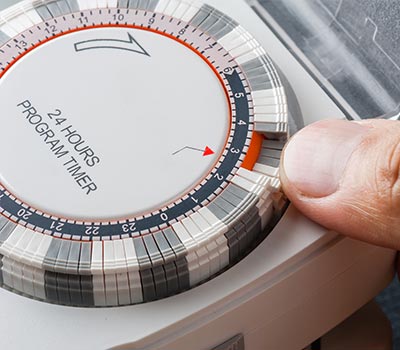
-
3
Cook dishes in the microwave to save energy.
Cook as many dishes as possible in your microwave over the holidays. Microwaves cook food so quickly, an Energy Star® model uses up to 75% less energy than a conventional oven.

-
4
Keep your refrigerator and freezer well stocked.
Keep your refrigerator and freezer well stocked. A full refrigerator or freezer saves energy by reducing the recovery time when the door is opened.
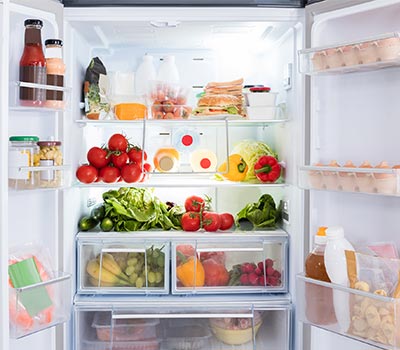
-
5
Save energy by using your oven more efficiently.
When using your oven, check cooking progress by looking through the window. Opening the oven door for even a few seconds lowers the temperature inside by as much as 25°F. If your oven doesn’t have a window, try not to open the door to check your food until it’s as close to the expected finish time as possible. Turn off your oven several minutes before your food is fully cooked. As long as the door remains closed, enough heat will be stored inside to finish cooking your meal.




